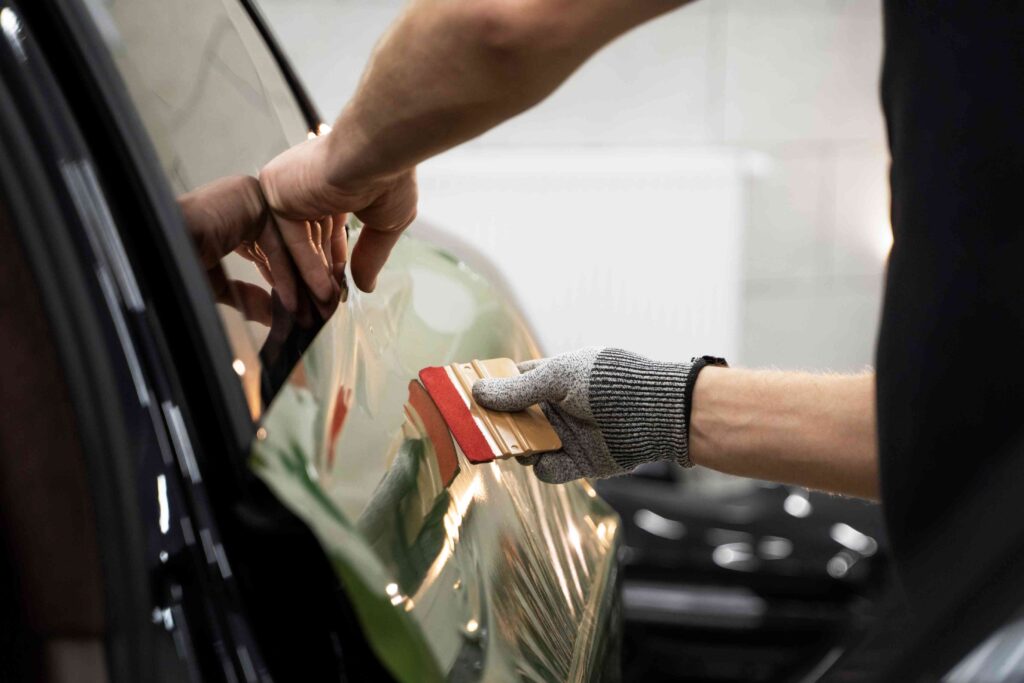If you’ve ever considered getting your car windows tinted, you’ve likely realized it’s not as simple as picking a shade and calling it a day. Whether you’re new to tint or exploring options for window tinting in Oakville, vehicle tinting comes in a variety of materials, shades, and technologies each offering a different set of benefits and price points. Whether you’re doing it for the style, privacy, UV protection, or to keep your car cool in the summer, understanding the different types of window tints is essential before making your choice.
In this article, we’ll walk you through the most popular types of window tint available for vehicles, along with their pros, cons, and typical use cases, so you can make an informed decision that suits your budget and driving lifestyle.
1. Dyed Window Tint
Overview:
Dyed window tint is often the most budget-friendly option and a popular choice for drivers who want a darker look without spending a fortune. This type of film has a layer of dye between an adhesive layer and a protective top coat.
Pros:
-
Affordable
-
Provides decent privacy
-
Reduces glare
Cons:
-
Fades over time
-
Limited heat rejection
-
Not as durable as premium options
Best for:
Drivers looking for a stylish, low-cost tint with basic UV protection.
2. Metalized Window Tint
Overview:
Metalized tint contains tiny metallic particles that reflect sunlight and heat. This makes it more effective than dyed film when it comes to heat and UV rejection. It also strengthens the window slightly by making it more shatter-resistant.
Pros:
-
Superior heat rejection compared to dyed tint
-
Won’t fade as quickly
-
Adds strength to windows
Cons:
-
Can interfere with electronic signals (GPS, cell reception, radio)
-
Reflective look might not suit every driver’s style
Best for:
Those who prioritize performance and durability over subtlety.
3. Carbon Window Tint
Overview:
Carbon tint is a step up from dyed and metalized films. It contains carbon particles that don’t fade and are highly effective at blocking infrared light, which is responsible for most of the heat inside your vehicle.
Pros:
-
Excellent heat and UV rejection
-
Matte finish for a sleek look
-
Doesn’t interfere with electronics
-
Long-lasting with no fading
Cons:
-
More expensive than dyed or metalized tints
Best for:
Drivers who want superior performance and aesthetics without sacrificing signal reception.
4. Ceramic Window Tint
Overview:
Ceramic tint is considered the top-of-the-line option in the world of automotive window film. It contains non-metallic, non-conductive ceramic particles that offer outstanding UV and heat rejection without interfering with electronics.
Pros:
-
Blocks up to 99% of harmful UV rays
-
Best heat rejection available
-
Maintains signal clarity for electronics
-
Extremely durable and fade-resistant
-
Enhances visibility and glare control
Cons:
-
High cost
Best for:
Car owners who want premium quality and maximum protection for both the vehicle and its passengers.
5. Hybrid Window Tint
Overview:
Hybrid tint combines dyed and metalized layers to provide a balance between cost, performance, and appearance. It attempts to minimize the disadvantages of each type while boosting their strengths.
Pros:
-
Good heat rejection
-
Less reflective than pure metalized film
-
Longer-lasting than dyed film alone
-
Reasonable cost
Cons:
-
May still cause minor signal interference
-
Not as effective as ceramic or carbon tints
Best for:
Drivers looking for a mid-range solution that offers decent performance and affordability.
Factors to Consider When Choosing Window Tint
Choosing the right window tint isn’t just about picking a shade. Here are a few important factors to keep in mind:
-
Local Laws: Tint darkness (VLT – Visible Light Transmission) is regulated differently in each state or country. Always check your local laws before making a choice.
-
Purpose: Are you looking for privacy, UV protection, heat rejection, or a combination? Different films excel in different areas.
-
Budget: While high-end options like ceramic tints offer the best performance, they also come with a higher price tag.
-
Aesthetics: The finish (matte, glossy, reflective) and color of the tint can drastically change your vehicle’s appearance.
Final Thoughts
There’s no one-size-fits-all solution when it comes to vehicle window tinting. What works best for one driver might not make sense for another. Dyed films may appeal to those who value style on a budget, while ceramic tints are ideal for someone looking for the best protection and performance money can buy.
No matter what you choose, make sure you go with a reputable window tint installer and ensure the film you select is high-quality and backed by a warranty. A good tint job doesn’t just enhance your vehicle’s look it can improve comfort, protect your interior, and even boost your long-term driving experience.
So take your time, weigh the options, and make a choice that suits both your car and your lifestyle. Safe driving and happy tinting!

